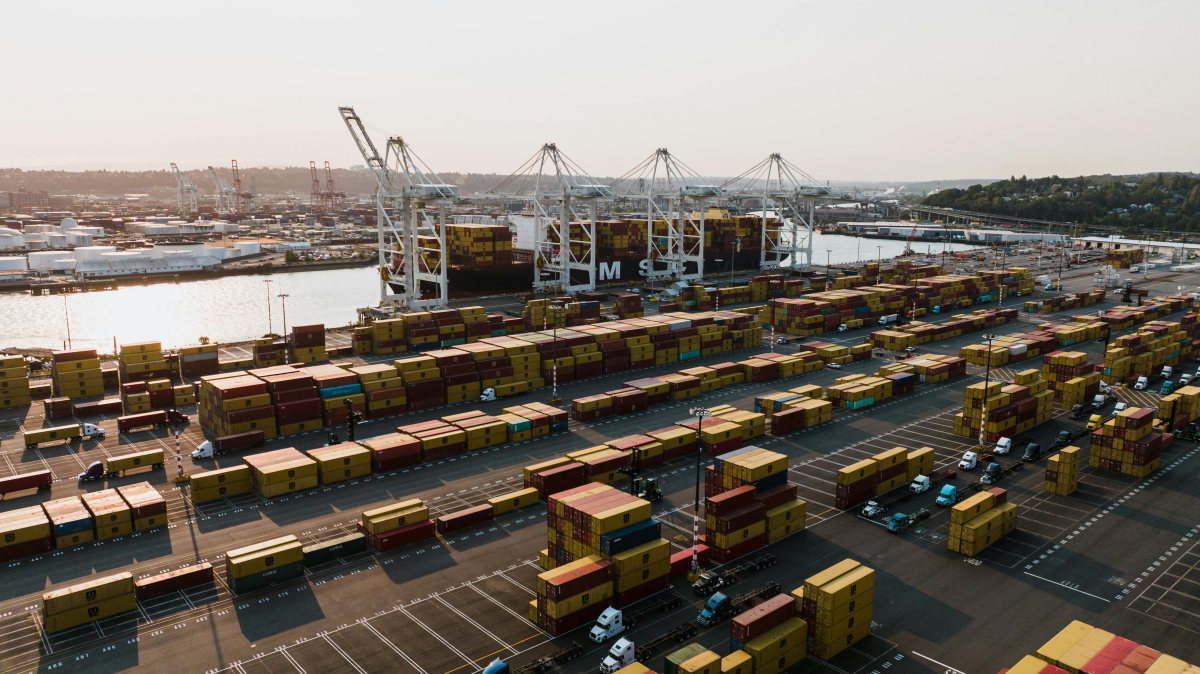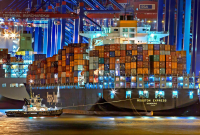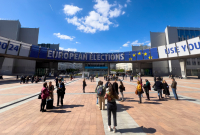Support strong Canadian climate journalism for 2025
The odd thing about our carbon tax kerfuffle is that it unfolds as if Canada were the only nation on earth.
“Axe the tax,” cry Conservatives, criticizing carbon pricing as a government tax grab and inflation booster. Liberals point out in response that most taxpayers receive rebates exceeding what they paid in the first place. Yet neither camp draws a connection between carbon pricing and international trade — a vital driver of Canada’s economy.
This conversation may change when the 45th Parliament sits after the next federal election. No matter which party forms a government, it will confront a weighty development on the international scene — the European Union’s introduction of a carbon border adjustment mechanism, or CBAM.
What’s a carbon border adjustment mechanism?
A CBAM is an ingenious policy designed to encourage carbon pricing around the world while protecting a country’s own domestic producers. Nations with a CBAM impose a fee (read: tariff) on the embedded carbon content of specific incoming goods. This charge is equivalent to the carbon price paid by their own domestic producers. Exporters receive a credit for carbon pricing already paid in their home countries.
For example, Canada exports aluminum to the EU. Aluminum producers in Canada pay a carbon price if their product exceeds the carbon intensity standard for this industry. With the EU’s CBAM, these producers will receive a credit on their European exports for the price paid at home. Without carbon pricing, these producers will forego this credit, paying the full EU charge for aluminum.
A CBAM raises the price of cheap, carbon-intense goods, making them less attractive than cleaner products. It combats “carbon leakage” by discouraging exporters from moving production to countries without a carbon price. It also increases the stringency of carbon pricing by replacing measures currently used to protect trade-exposed industries, such as output-based pricing systems.
The European Union is leading the way on CBAMs. It introduced a Carbon Border Adjustment Mechanism Regulation on October 1, 2023.
The regulation applies in its first phase to cement, iron and steel, aluminum, fertilizers, electricity and hydrogen. Initially, affected companies must only report the carbon content of these goods.
But in January 2026, they will begin to pay charges on these goods. Between 2026 and 2023, the EU will gradually expand the scope of the CBAM. By 2030, it will include all products traded under the Emissions Trading System (ETS).
Canada-EU trade and investment
How important is the EU to Canada’s economy? Vitally important.
The EU is Canada’s second-largest partner in global trade. Canada-EU trade reached $158.1 billion in 2023, a total including $34.5 billion in exports. Our chief exports to the EU include machinery, aluminum, fish and seafood, mineral fuels and rubber products.
The EU’s carbon border adjustment mechanism threatens to disrupt this sweet deal by imposing a charge on the carbon emissions of Canada’s EU exports. Any future Canadian government will act to protect Canada’s EU trade. But growling about the EU’s carbon tariff won’t cut it. Canada will need its own plan to reduce emissions — and our existing carbon pricing system already does that at the lowest possible cost.
Other nations respond
Other nations are already responding to the EU’s CBAM. In the U.S., Senator Sheldon Whitehouse and Congresswoman Suzan K. Delbene introduced the Clean Competition Act, which would create a CBAM. In a similar vein, the Providing Reliable, Objective, Verifiable Emissions Intensity and Transparency (PROVE IT) Act, currently before the House and Senate, would require the Department of Energy to track the emissions intensity of nearly two dozen products made in the U.S. and G7 countries, including Canada.
China and India are also responding. China’s steel producers fear Europe’s CBAM could raise the price of its steel exports by four to six per cent initially, with further increases coming later. India is responding precisely as the authors of the EU CBAM intended — weighing local taxes to avoid the European tax.
Finally, the UK has announced plans to implement a CBAM by 2027.
Canada moves on CBAMs
Canada’s federal government has taken note of these developments. Its 2020 climate plan included a statement of intention to “Explore the potential of border carbon adjustments, and work with like-minded economies—including the E.U. and Canada’s North American partners.”
Canada and the EU also issued a joint declaration in May 2022, confirming their intention to coordinate their policies on carbon pricing and CBAMs to prevent carbon leakage and accelerate global climate action.
Axe the tax, meet CBAMs
Conservatives have whipped up a tide of discontent by concentrating solely on the carbon fee while ignoring the rebate. They further distort the argument by framing the carbon price solely as a domestic matter, ignoring its potential to boost trade and attract investment.
I don’t claim to predict the future. But when I consider the international trend towards CBAMs, I find it hard to count out the carbon price.
The Liberal’s much-disputed carbon tax might just survive.
Andy Kubrin is a writer and climate activist based in Calgary. He is a member of Citizens’ Climate Lobby Canada and the Calgary Climate Hub. He also blogs at Alberta Beyond Fossil Fuels.






Comments